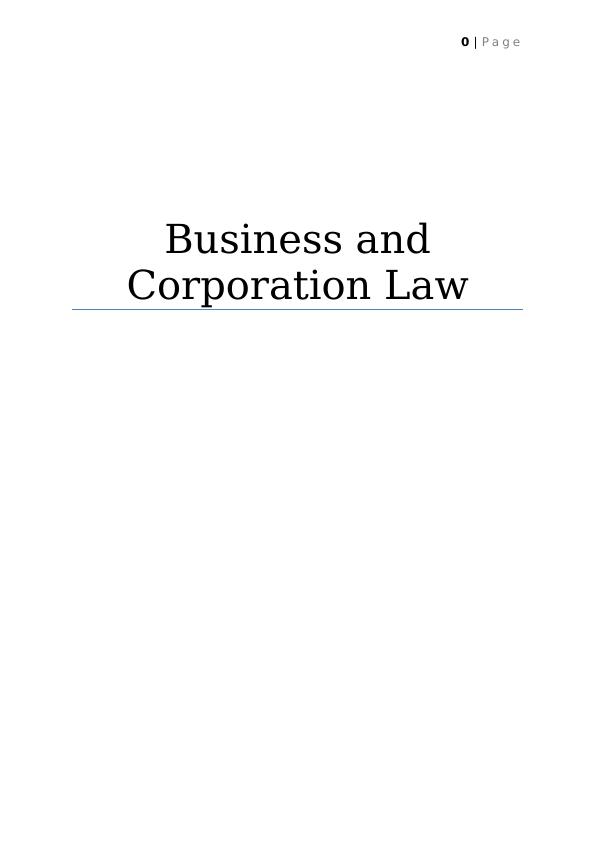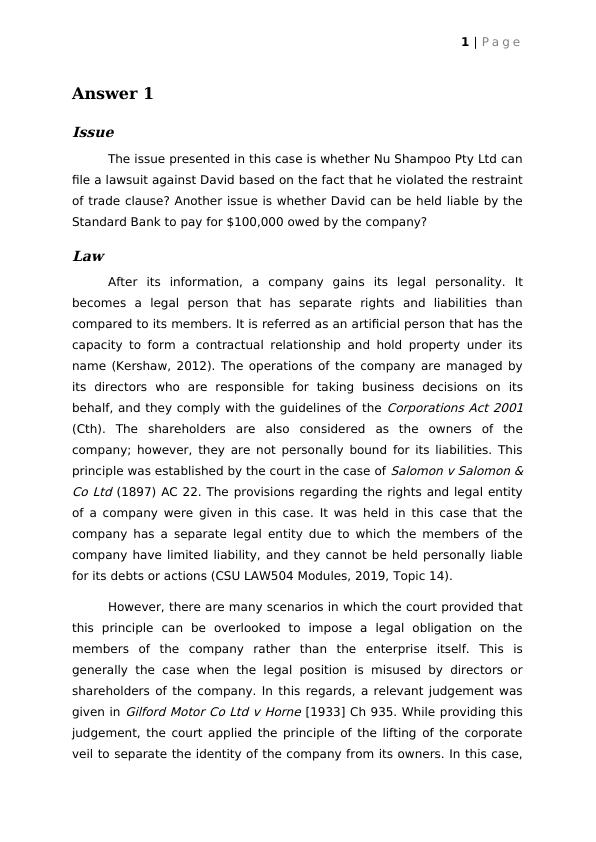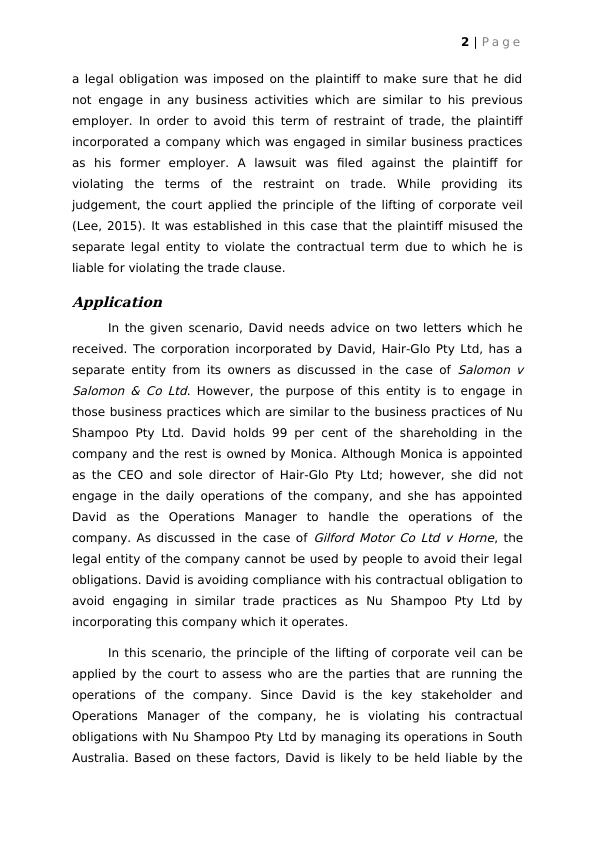Liability of Partners in Partnership Law
8 Pages2081 Words52 Views
Added on 2023-01-10
About This Document
This document discusses the liabilities of partners in partnership law, focusing on the application of the Partnership Act 1892 (NSW) and relevant case laws. It explores the fiduciary duty of partners and the joint liability for debts. The document also examines the consequences of partners acting outside their authority and conflicting personal interests with the partnership. Case examples and legal principles are provided to illustrate the concepts.
Liability of Partners in Partnership Law
Added on 2023-01-10
ShareRelated Documents
End of preview
Want to access all the pages? Upload your documents or become a member.
Liabilities of Anne and Mary for Actions Taken by Jane and Sarah
|8
|2316
|61
Liability of David towards Nu Shampoo Pty Ltd and Standard Bank
|8
|1962
|85
Corporate Law and Governance
|12
|4245
|94
Legal Analysis of Hair-Glo Ltd and Partnership Liability
|7
|1983
|21
Business Law: Nu Shampoo Pty Ltd vs. Hair GLo Ltd
|11
|2377
|48
Corporate Law Assignment
|6
|1576
|190



